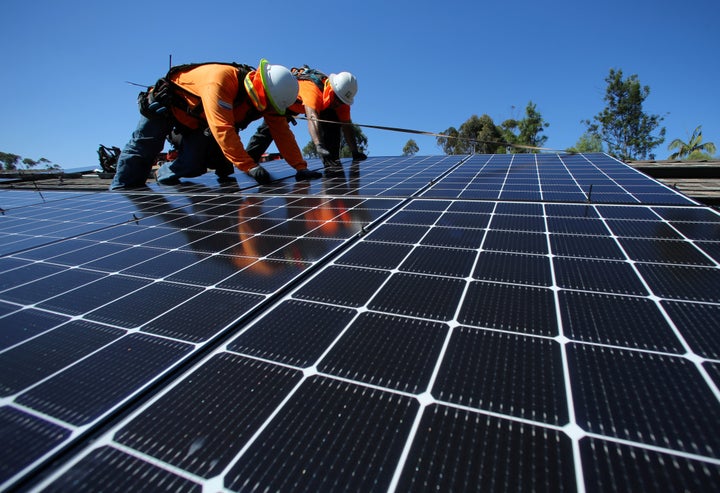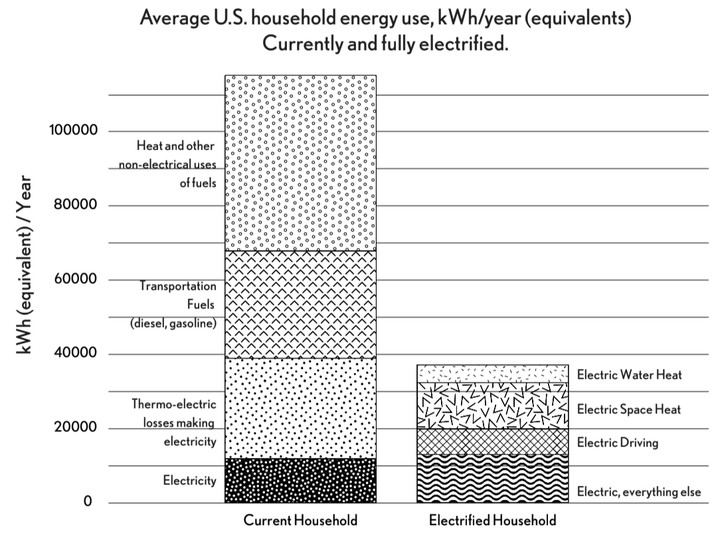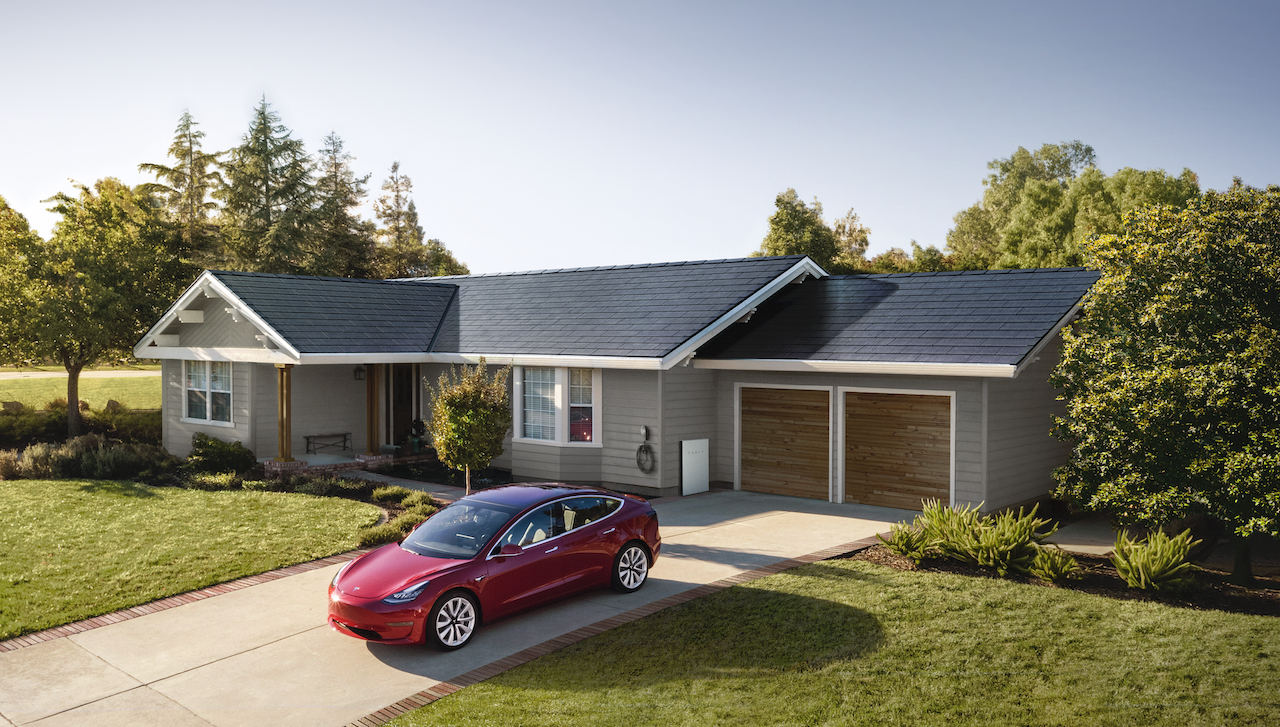Read The Full Article On: Huffington Post
Optimistic visions of America’s climate future look dramatically different from life today. The population abandons the suburbs for dense, efficient urban housing. Personal cars give way to bikes and green public transit. Those who can make the sacrifice sweat out the summer heat, rationing the air conditioning for those who most need it.
The alternative, so goes this line of thinking, is apocalyptic chaos.
But what if Americans could drive the same miles and blast the A/C to cool single-family suburban homes all summer long and actually reduce U.S. emissions of climate-changing gases by 40%? Not only is it possible, according to a new study, the average household would save up to $2,500 a year and do it with technology that’s on the market today.
The finding, published Thursday morning, is the second major report from Saul Griffith, the physicist, MacArthur “genius grant” winner and energy researcher behind the group Rewiring America.
The group, which aims to rapidly decarbonize the U.S. by electrifying all aspects of the economy, made its debut in July with a report that found doing so would create 25 million good-paying jobs and eliminate roughly 75% of the country’s carbon emissions in the next 15 years.
The conclusions ran “contrary to conventional wisdom in the energy space” but painted an “oddly optimistic” picture, Vox energy columnist Dave Roberts observed in a thorough write-up of the first report, noting that all the U.S. needed was “a serious commitment to building the necessary machines and creating a regulatory and policy environment that supports their rapid deployment.”

Griffith’s latest results could help spur the political will to make that commitment.
Two years ago, Griffith’s research outfit Otherlab won a contact from the Department of Energy to aggregate all the publicly available data on how energy is used in the U.S. economy into one model. Combining those data showed that the way decarbonization is usually discussed, as a sector-by-sector approach, is flawed. Real-life energy usage does not fit in the neat categories the federal Energy Information Administration created at its founding in the 1970s. Electrifying a home heating system not only reduces emissions from the residential sector but also from the industrial sector that produced the old equipment and the utility sector that once provided the fuel, meaning national-scale household changes can make much larger cuts to U.S. climate pollution than previously believed.
To calculate the savings in the latest report, Griffith established a baseline of energy costs per household, broken down using the Energy Information Administration’s state data, and identified the equipment required to electrify those energy uses. His team then built an “Electrification Exchange Rate” model to convert each unit of current energy services into an equivalent in an electrified world, accounting for the reality that a “fraction of a gallon of gasoline used to travel a mile today can be exchanged for a fraction of a [kilowatt-hour] for the same mile travelled in an electric vehicle.”
It might frustrate the true-efficiency environmentalists and those who believe city living is the future for everyone, but the suburbs stand to benefit the most economically. Saul Griffith, energy researcher behind Rewiring America
Then the study looked at costs. Griffith’s team calculated future electricity costs by blending the current price of electricity in each state with the financed cost of rooftop solar. They analyzed the cost savings from future total household electrical load and the upfront costs of buying all this new equipment, then estimated the yearly financing payments based on different interest rates. They then subtracted the finance payments from the annual fuel savings to determine the real savings possible for each household in each state and performed some extra calculations to account for different conditions in each state.
“The technology conversation is based on existing technology,” Griffith said. “We assume no behavior change in the household.”
The “good” model renders the yearly cost savings at about $1,000 per household. The “great” model finds savings of up to $2,500.
“There’s this notion hanging in the air that there are sacrifices needed to be made,” said Adam Zurofsky, a constitutional lawyer who helped oversee New York state’s climate and energy portfolio and who now serves as Rewiring America’s executive director. “No, this is actually a way for us to stimulate the economy, put people back to work and put money back in people’s pockets.”
In a counterintuitive twist on what’s become green dogma on decarbonization, “it’s actually suburban households that do the best,” Griffith said.
Subscribe to the Politics email.
From Washington to the campaign trail, get the latest politics news.
“It might frustrate the true-efficiency environmentalists and those who believe city living is the future for everyone, but the suburbs stand to benefit the most economically,” he said.
By applying the same household model to commercial businesses, the U.S. could slash its total carbon emissions by 65%. Dramatically cutting the climate pollution of the world’s No. 2 emitter alone will not keep global temperatures from climbing 2 degrees Celsius above pre-industrial averages, a benchmark beyond which projections show catastrophic weather, droughts and sea-level rise. But given the economic and political might of the U.S., other countries would almost certainly follow suit, putting the world on track to avert a current warming trajectory on pace to far surpass 2 degrees by the end of the century.
To begin deploying electric vehicles, heating systems, cooking equipment, batteries and rooftop solar panels at scale, the White House would need to take rapid steps in the next two years to lower costs, ramp up manufacturing and streamline permitting.
This is no easy task. But federal tax credits, subsidies and rebates could do a lot of the heavy lifting, along with procurement deals from the government directly. As a model, federal authorities could look to the Federal Housing Authority and Fannie Mae, two programs President Franklin D. Roosevelt created in the 1930s amid the Great Depression.
By essentially deciding “homes were critical national infrastructure deserving of the best possible financing rates,” these programs “created the largest capital market ever to exist in the world, before or since,” the report found. Griffith wants to expand that financing guarantee from homes to electric cars, heat pumps, rooftop solar panels and batteries.

Another New Deal program, the Electric Home and Farm Agency, helped the federally owned Tennessee Valley Authority offload its oversupply of electricity from hydroelectric dams to homes by providing Treasury-backed loans to buy more electric appliances. Reviving that program, which was disbanded in 1942, could provide another avenue.
Revving U.S. manufacturing capacity to mass-produce the machines needed to make the transition would require a federal intervention in the economy unlike anything seen since Roosevelt pressed companies into cranking out the arms and ammo that ultimately helped win World War II. That could invite pushback from the political right, which couches its opposition to curbing carbon emissions in an ideological hostility to government command over the market.
In its “field manual” for decarbonizing the economy, Rewiring America argues: “The invisible hand of markets is definitely not fast enough; it typically takes decades for a new technology to become dominant by market forces alone as it slowly increases its market share each year. A carbon tax isn’t fast enough, either. Market subsidies are not fast enough.”
But the programs outlined in the report would make the cost of electric vehicles and home equipment “so cheap that even the right will get on board,” Griffith said by phone Wednesday evening.
“This will help us turn the politics of this because it will start to sound like traditional American free marketism,” he said.
There’s nothing stopping the Trump administration from doing this other than the president’s antipathy toward climate science and fealty to the fossil fuel companies whose profits would suffer most from such a rapid transition. But these changes seem much more likely to take place if Democratic challenger Joe Biden, who has vowed to transition the country to 100% carbon-free electricity by 2035, wins next month’s election.
“What the climate needs is for Biden to turn into FDR in 100 days or less,” Griffith said. Unless Biden takes those steps, he said, “we’re not going to hit a 2-degree target.”

